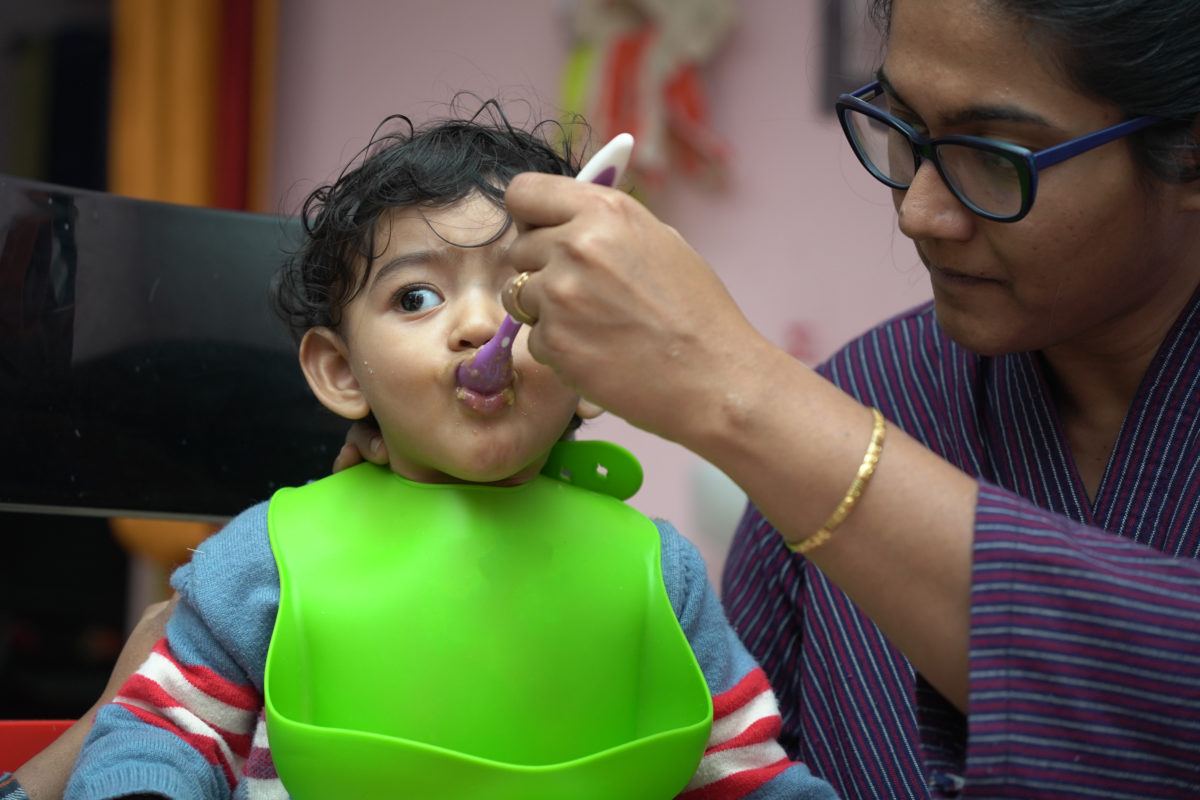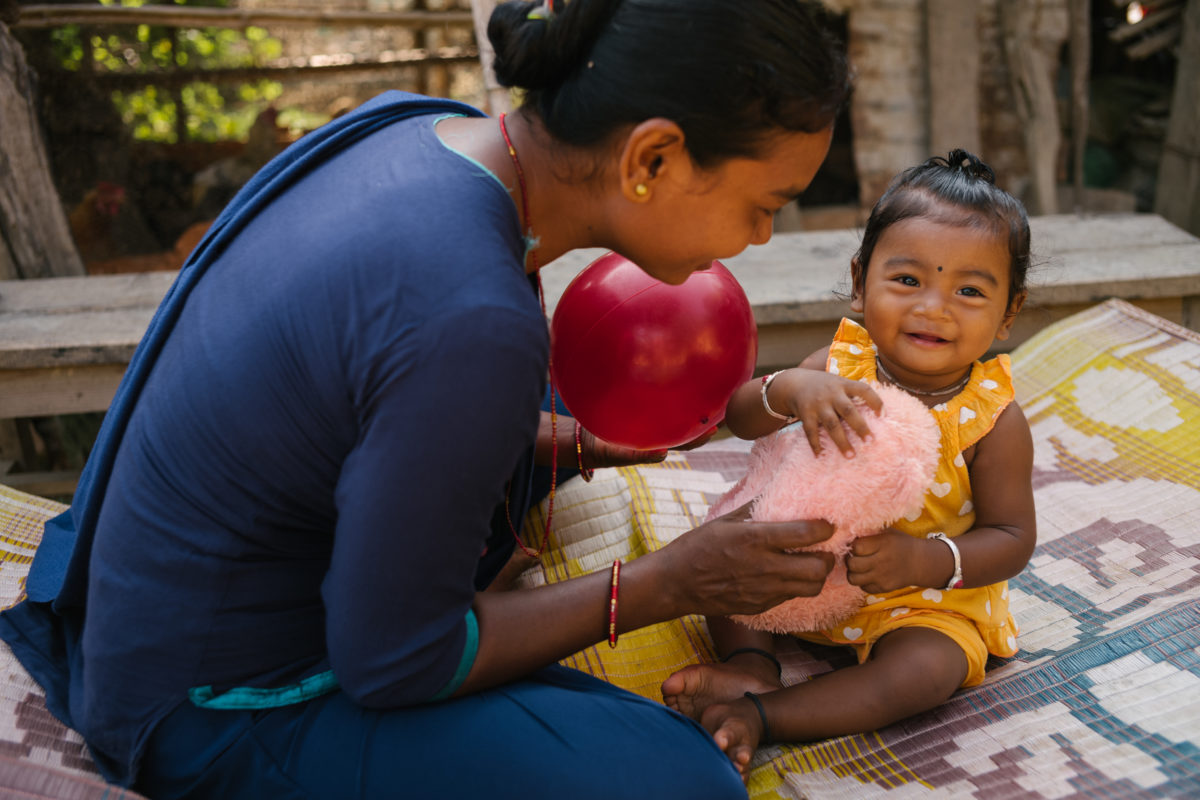Research question: What is the state of nutrition during the 1,000-day window for families in the United States, and what are the opportunities to strengthen federal research and surveillance, programs, and communication and dissemination efforts aimed at improving nutrition and influencing the health and well-being of pregnant people and children?
Why this research was needed: An analytical essay published in The American Journal of Public Health summarizes the current state of nutrition for families in the 1,000-day window in the United States. It further proposes a framework by which nutrition during this period can be improved. These recommendations could inform policymakers, public health and health care communities, and program leaders.
The 1,000-day window is the period between pregnancy and a child’s 2nd birthday and is a critical time in the development of a child. Good nutrition during the first 1,000 days can have a profound impact on the health and well-being of pregnant people and children.
How the research was conducted: The researchers carefully reviewed dietary intake compared with the US Department of Agriculture and US Department of Health and Human Services Dietary Guidelines for Americans 2020–2025, as well as the primary literature covering health, nutrition, and clinical outcomes for pregnant people and children during the 1,000-day window. They then created a high-level summary on the status of nutrition in the United States with focuses on dietary status, health, and outcomes of pregnant people, infants, and toddlers during the 1,000-day window. They also provided a framework for future improvements to research and public health surveillance, programmatic approaches, and communication and dissemination initiatives.
What the research found: The current state of nutrition during the 1,000-day window shows numerous gaps between dietary intake and recommendations, with race and ethnicity disparities across the spectrum. The average intake of total vegetables, fruits, and dairy are below federal recommendations during pregnancy and lactation. At the same time most pregnant and lactating people exceed the thresholds for sugars (70% and 51%), saturated fat (75% and 77%), and sodium (88% and 97%) respectively. In addition, nearly 50% of pregnant persons gain more than the recommended amount of weight during pregnancy and 20% gain less.
While it is recommended for infants to be exclusively fed human milk for the first 6 months, data from 2019 revealed that only 24.9% of infants exclusively received human milk through 6 months. Race- and ethnicity-based disparities in human milk feeding remain. Moreover, while it is recommended that complementary foods—those other than human milk or formula—should not be introduced before 4 months, this is the case with about 31.9% of infants.
Children between 12–23 months had total vegetable intake below recommendations while total intake of fruits, grains, and dairy were above recommendations. The average intake of added sugars and sodium were above recommendations.
What the research proposed: The proposed framework to improve nutrition encompassed three aspects—strengthening federal research and surveillance, optimizing programs, and improving communication and dissemination.
Historically, surveys have not included, or have had insufficient samples of pregnant and lactating women, infants and toddlers, and different racial and ethnic groups, leading to gaps in the data. Improving research and surveillance can start with modifying existing systems to improve coverage and data gathering for underrepresented subpopulations.
Programs can be optimized by reducing barriers to participation and reducing inequity among participants to alleviate disparity. Improving participation and engagement in these programs, as well as implementing standards, recommendations, and interventions that affect these programs could improve health and nutrition outcomes.
Scientific nutritional recommendations can be communicated through tailored and specific messages that target key audiences and are consistent with the Dietary Guidelines for Americans and supplemental recommendations. With the rapidly changing landscape of reaching audiences, implementing agencies and organizations need to collaborate effectively to provide tools and messaging that are culturally and linguistically relevant.
What this research means for key stakeholders: The framework proposed in this paper could inform key stakeholders in the following ways.
For policymakers: Data-gathering objectives to fill the current information gaps can be met by early care and education programs (ECE), clinics implementing the Special Supplemental Nutrition Program for Women, Infants, and Children (WIC) and federally qualified health care centers that act as sentinel surveillance sites. Implementing standards that affect programs (e.g., licensing standards in ECEs) could improve health and nutrition outcomes. Updating clinical guidelines could also help improve how care is provided. Targeted, audience-specific messaging can help disseminate information to vulnerable groups.
For the public health and health care communities: The electronic health records of underrepresented populations can be used to bolster technological advances in supplementing existing data like feeding decisions, health outcomes, and biologic data. Clinical guidelines and recommendations for programs can be improved by healthcare delivery through tele-health visits, engaging health care support teams, and updating guidelines to improve how and when care is provided. Interventions should be prioritized that have significantly affected health outcomes, can be scaled, reach high-risk populations, reduce inequities, and complement existing federal or state programs. Linguistically and culturally sensitive communication could improve nutrition status in vulnerable populations.
For program leaders: Improving participation and engagement in programs such as WIC, the Child and Adult Care Food Program, and the Maternal, Infant, and Early Childhood Home Visiting Program could contribute to improving health and nutrition outcomes. The following interventions should be prioritized—those that have significantly affected health outcomes, can be scaled, reach high-risk populations, reduce inequities, and complement existing federal or state programs. Tailored, audience-specific messaging will help communicate and disseminate information on early childhood care and education more effectively.
Key takeaway: Optimal nutrition in the first 1,000 days can have lifelong effects on the health and well-being of pregnant people and children. Working collectively through a framework focused on advancing research and surveillance, programs, and communication and disseminationcould improve health equity, reduce maternal mortality and morbidity, and improve child health outcomes for current and future generations.
*DISCLAIMER: This write-up is derived from a published article and does not reflect the views of the author of the article, their affiliation, or the journal in which this content is published.
Authors/Reference/DOI: Heather C. Hamner, PhD, MS, MPH, Jennifer M. Nelson, MD, MPH, Andrea J. Sharma, PhD, MPH, Maria Elena D. Jefferds, PhD, Carrie Dooyema, MPH, MSN, RN, Rafael Flores-Ayala, DrPH, MApStat, Andrew A. Bremer, MD, PhD, Ashley J. Vargas, PhD, MPH, RDN, Kellie O. Casavale, PhD, RD, Janet M. de Jesus, MS, RD, Eve E. Stoody, PhD, Kelley S. Scanlon, PhD, RD, and Cria G. Perrine, PhD. Improving Nutrition in the First 1000 Days in the United States: A Federal Perspective. American Journal of Public Health. doi: 10.2105/AJPH.2022.307028. 2022
Corresponding author contact information: To speak with the author, please contact CDC press office: (404) 639-3286 or media@cdc.gov. To speak with the media team at 1,000 Days, contact Blythe Thomas










